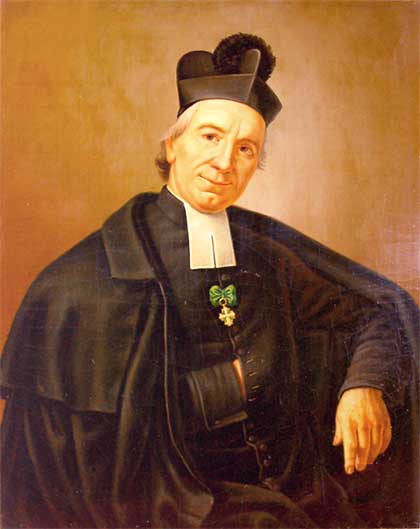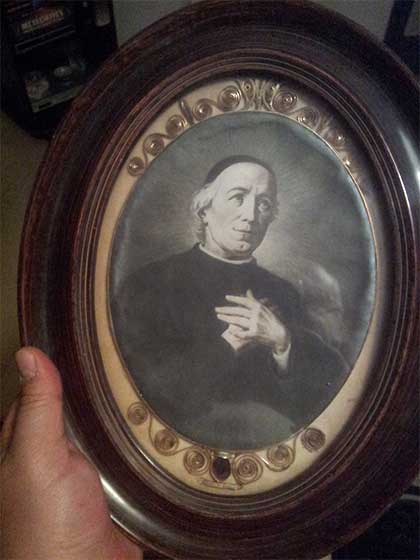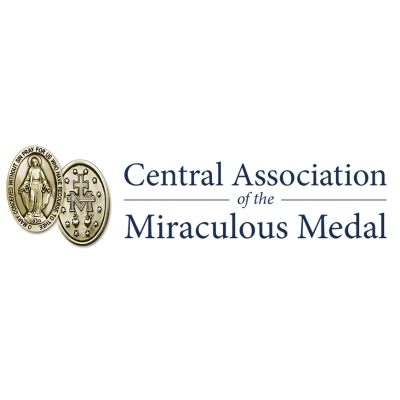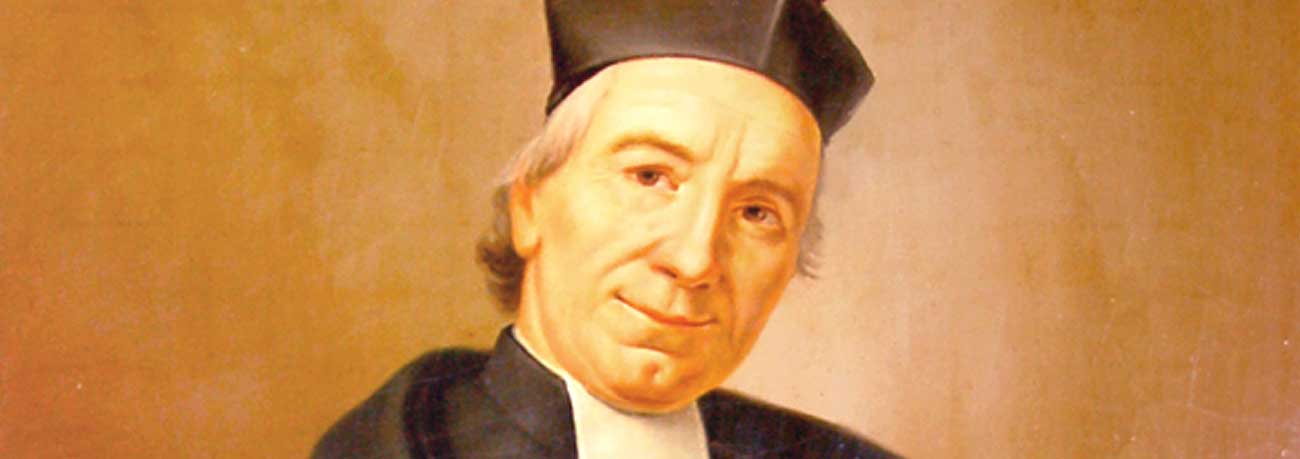Name That Saint: Joseph Benedict Cottolengo
Name That Saint: Joseph Benedict Cottolengo

St. Joseph Benedict Cottolengo was born near Turin in 1786 to middle-class parents. He was the eldest of 12 children (six of whom survived childhood), and one of three to become a priest. In his youth, he was drawn to religion, but he had difficulties in his studies. Praying to St. Thomas Aquinas for the ability to pass his exams, he became a priest in 1811, and received his Doctorate in Theology in 1818.
This period was fraught with Napoleonic invasions and the resulting societal fallout. Many people fled from the country to Turin, turning it into a city riddled with poverty, illiteracy, epidemics, and crime. Witnessing these problems created a great struggle for Joseph. He was teaching at the college, had a full life of prayer, and gave to the poor, but something was missing. He believed God was asking him for more. After reading about the life of St. Vincent de Paul, he found the answer: charity. However, he didn’t know how to apply that to his life. So he prayed with even greater fervor.
The answer came in a situation that almost mirrored St. Vincent’s “conversion.” On September 2, 1827, Joseph helped a French woman who was traveling from Milan to Lyon. Surrounded by her family, the young pregnant woman lay in a dirty room “dying in the midst of drunkards and bums,” her husband sadly exclaimed. The main hospital in Turin refused her because she was pregnant, and the maternity hospital refused her because she had tuberculosis (the rules forbade admitting anyone who might be contagious). The only person willing to assist her was Joseph, who felt helpless to alleviate her physical sufferings. He gave her last rites and baptized her prematurely born baby before it, too, died.
This experience was so traumatic, he ran to the church afterwards and prayed fervently at Our Lady’s altar. Hours later, his prayers were answered; he knew what he was called to do. In thanksgiving for Mary answering his prayers, he rang the bells at the church and had all the candles lit at her altar. Then he sold everything he owned and opened a small house where anybody could receive medical care.
Like St. Vincent, he gathered people to help: his friends (one a doctor, another a pharmacist) and women volunteers (who eventually became sisters in one of Joseph’s congregations). “The poor are Jesus,” he said, “They are not just an image of him. They are Jesus in person and must be served as such.” Everyone who was turned away from the hospital came to him, and with an audacious trust in God, Joseph refused no one, knowing that God would provide.

When the cholera epidemic hit Turin, the health authorities demanded that Joseph close his house lest it become a source of contagion. Undaunted, he gathered his belongs, and, after referring to the town in which he was born as the “cabbage center” of Italy, said, “Cabbages gain in size and quality by being transplanted. We must change our quarters and look for more spacious grounds.” With the continuing support of his priest friends and laypeople, he started a new enterprise in Valdocco: the Little House of Divine Providence. Just like the parable of the mustard seed, it had small beginnings but grew into a “city of charity,” with additional houses built to serve the poor, sick, elderly, and abandoned. Joseph also started 14 religious congregations to staff these homes. His work for the poor, sick, and abandoned was so prolific, he was dubbed the “Italian Vincent de Paul.”
All of this was done on nothing but Fr. Cottolengo’s bold trust in Divine Providence. One story epitomizes his unflinching confidence in God. A religious sister approached him saying that they didn’t have enough money to buy the food necessary for their patients. Joseph asked her to show him how much money she had. When she gave him her few coins, he threw them out of the window into the fields, saying that as long as she had something, God wouldn’t provide. Now that she had nothing, help would be on its way. That night, they received a large sum of money that covered their necessities.
While caring for the sick, he contracted typhus and died. Pope Benedict XV beatified him in 1917 and Pope Pius XI canonized him in 1934. He’s prayed to for liver and infectious diseases, and was listed as one of “the saints, who exercised charity in an exemplary way” in Pope Benedict XVI’s encyclical Deus Caritas Est. His feast day is April 30.
“When I am in Heaven, where everything is possible, I will cling to the mantle of the Mother of God and I will not turn my eyes from you.” ~ St. Joseph Benedict Cottolengo’s last words.
————————————-
PHOTO ATTRIBUTIONS:
Opusdei28, CC BY-SA 4.0 <https://creativecommons.org/licenses/by-sa/4.0>, via Wikimedia Commons
Agostino Cottolengo (1794-1853), Public domain, via Wikimedia Commons
Get InSPIREd!
Sign up below and receive our monthly inspirational Newsletter dedicated to Mary!


